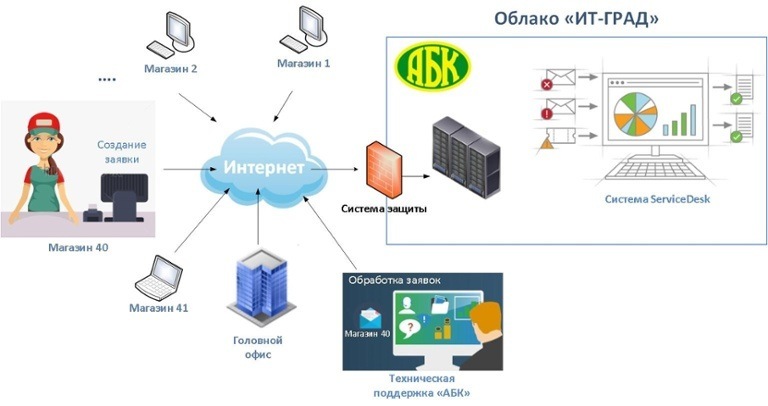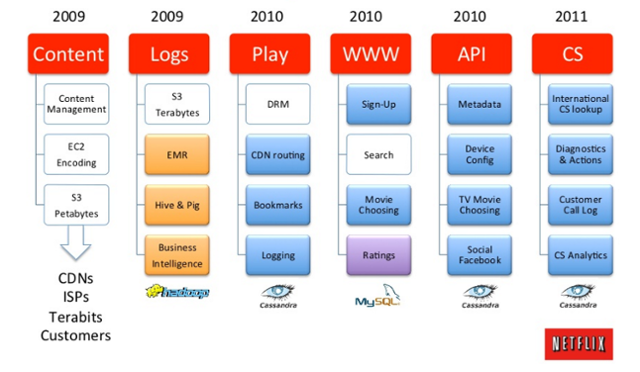Experience of using IaaS by large (and not so) companies

We in IT-GRAD try to tell in our blog about Habré about cloud technologies and IT infrastructure. Last week we presented a feasibility study for the introduction of cloud technologies at the level of virtual infrastructure.
Yesterday we gave examples of how the "cloud" helps the business , and earlier we talked about how various companies "move" to the cloud. Today we would like to continue this topic.
')
I want to start with the company FRANMER , which from the very beginning has chosen a difficult path of development. Today the company is the leader in sales of composite pools in Russia. The company FRANMER started working back in 2004, when cloud technologies were at an early stage of development. At that time, companies preferred to purchase and maintain their own infrastructure.
FRANMER was no exception. By purchasing its own hardware and software, the company organized a server and formed an IT department. As is usually the case, with the growth of the company, the expansion of the range and range of services offered, a situation arose when it was necessary to revise the principles of building the existing IT infrastructure. The company needed high reliability and mobility, coupled with high availability and adequate cost. The management of the company decided to “fly” to the clouds.
To date, the IaaS-cloud “IT-GRAD” contains most of the FRANMER services, among which are the distributed 1C database containing information about products, orders and customers, and a virtual call center. The main advantage of the cloud call center is that all incoming calls are processed by a digital PBX. Thanks to this, you can quickly get the caller's data from the 1C database (first name, last name, middle name); in this case, the FRANMER managers see the details of all incoming calls.
Since FRANMER has a large number of dealerships in different cities, all employees need centralized access to a single 1C database. This functionality was implemented by transferring the 1C database to the IT-GRAD IaaS cloud.

If we look at the statistics, it becomes clear that today companies are increasingly looking towards the "clouds": starting from 2014, the popularity of cloud technologies increases by 44% annually , and the total cost of equipment that will replace cloud infrastructure by 2018 is estimated at $ 79 1 billion
At the same time, some organizations transfer the IT infrastructure to the cloud completely, others are only part of it. The network of supermarkets “ABK” went along the second path, having carried out the transfer of virtual servers with the ServiceDesk system to the cloud.
“We came to the conclusion that the ServiceDesk system is a non-core asset for the company and it is more expedient to bring it to the cloud from an economic and technical point of view,” comments Dmitry Zotov, head of the system administration department at ABK. “Due to the fact that it was more expensive to service the solution with our own resources on our own site than to use the resources of an IaaS provider, which is profiled on this, they transferred the service to a cloud platform.”

At the moment, the basic architecture of the company, which includes Active Directory, e-mail and file services and accounting systems, works "on-site" and is controlled by the IT department of the company. However, in the near future, the management of ABK plans to transfer all these services to the cloud, in particular, to the IT-GRAD cloud.
The network of supermarkets "ABK" clearly demonstrates one of the strategies for moving to the cloud: move one service "on trial" and then pull up the rest. This approach is practiced by many companies.
For example, earlier this year it became known that the giant Netflix company completed the transfer of capacity to the cloud and closes its latest data center. The movie vendor translated payment infrastructure, a big data platform, video broadcasting services, customer and employee data management systems, and more from local servers.
Netflix is a popular streaming service that generates one-third of all North American Internet traffic during peak hours. Thus, it turns out that Netflix is the largest cloud application. The transition to the cloud was not in vain, moreover, it was forced. According to the company, the number of users of the service has increased eight times over the past 8 years, and the frequency of views has increased almost a thousand times.

With such a load, it becomes more difficult to maintain its own infrastructure and increase the capacity of its own data centers every year. The cloud also allows you to operate with thousands of virtual servers and petabytes of disk space. Today Netflix is one of the largest companies working with virtual infrastructure. The only thing Netflix decided not to transfer to the cloud is the content delivery networks deployed on the side of individual service providers.
The content delivery system caches video on the sites of providers, which improves the performance of the streaming services. To do this, Netflix installs its own servers on the ISP side and controls the network outside the cloud cloud ecosystem. Now Netflix frontend services run on Tomcat and nginx web servers, the number of which varies from 500 to 1000 depending on client requests. The company also uses the NoSQL Cassandra database servers, whose high performance is provided by the system of distributed caching of objects.

The image above shows that the transition to cloud technology has been carried out gradually over several years. According to Netflix, vice president of cloud solutions development, Yury Izrailevsky, “moving to the cloud turned out to be hard work.”
“I seem banal, but I am surprised by the statements about the transfer of the entire infrastructure to the cloud in a short time. After all, it also includes the traditional systems of a decade ago, and they are not at all sharpened to the cloud, - comments Yuri. “Migrating or deploying such applications takes a lot of time and effort.”
But as is always the case, after solving a complex problem, it is useful to take a few lessons. But it is even more useful to learn from other people's experiences, which Netflix did not hesitate to share. Tip one: do not rush and at once transfer business-critical applications. The first step is to analyze the application portfolio and prioritize the migration. In this case, you do not need to limit yourself to a rigid framework, because the transition to cloud technology may be delayed.
The second tip: it is worth remembering that moving to the cloud is not just a transfer of applications. It is necessary to review the processes and financing model and not forget about the decisions of Agile, Lean and DevOps. It will also be useful to use configuration management tools such as Puppet or Chef, and Jenkins and Travis CI integration and deployment tools.
And finally, the third piece of advice: remember that by moving an application to the cloud "as is", you are pulling in it for existing problems. Because of this, you will need to make changes to the architecture in the future. Think about moving towards microservices and using tools to work effectively with data (for example, Redis, Memcached, and MongoDB).
Moving to the cloud should not take place spontaneously, especially when it comes to transferring hundreds of different services and thousands of components. Here a strategy of gradual, smooth and painless migration is needed. Haste in this matter is not an assistant.
PS Our other materials on the topic:
Source: https://habr.com/ru/post/281809/
All Articles